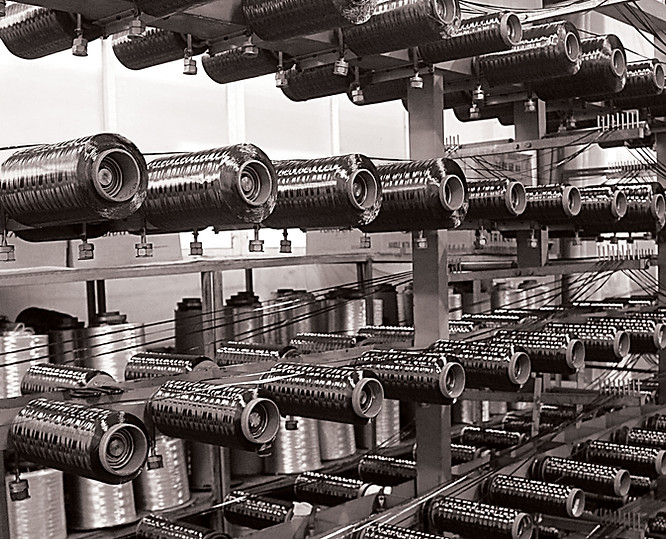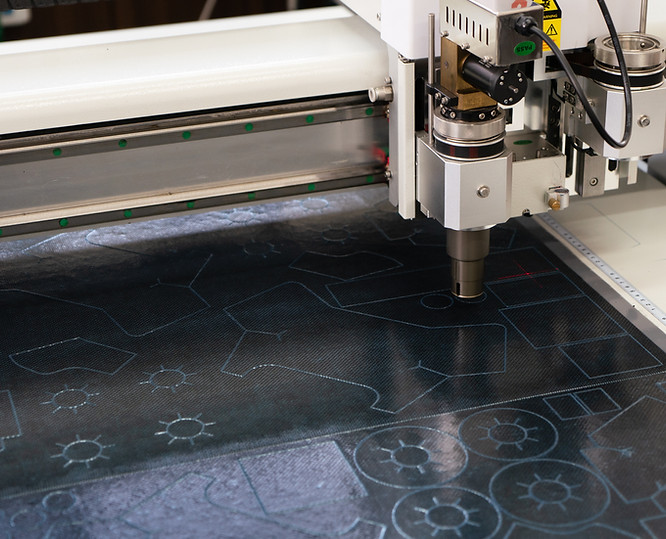
TECHNOLOGY
NANO CARBON TECHNOLOGY
WIAWIS’s material research began with producing archery products that now dominate the archery market. Over the past 30 years, this research has continually evolved and advanced. Archery equipment is subjected to significant impacts while requiring the utmost precision. Reducing vibration, absorbing shocks, and achieving high stability and accuracy were key priorities. Each bow limb needed to deliver consistent performance, despite varying sizes and strengths. Flexible yet fast, strong yet resilient, these materials were designed to efficiently transfer the energy generated by athletes. Material research became a necessity in creating such products. Don’t these attributes sound remarkably similar to the demands of a bicycle?

CHAPTER 1 : MATERIAL
Graphene
The reason we use graphene is its ability to alter the mechanical properties of carbon. By adjusting the ratio of carbon fibers to resin, we develop and produce materials with properties tailored to specific products. This ratio determines carbon’s characteristics, such as stiffness, impact resistance, and durability. Extensive internal testing and development, from Carbon Nanotubes (CNT) to graphene integration, have been conducted.



Essential to this process is dispersion technology. Resin, in simple terms, acts as an adhesive. Imagine sprinkling flour onto sticky glue—it doesn’t mix easily. Dispersion technology ensures uniform mixing through mechanical methods using dispersion machines and chemical methods with specialized agents. This requires advanced techniques.
Developing the optimal ratio and mastering this technology demands extensive time and countless samples. This work is only possible in an environment capable of producing prepreg in-house.

Prepreg
We produce prepreg directly using our proprietary machinery. This allows us to precisely control the uniformity and accuracy of prepreg and continuously improve materials.
The ability to apply graphene technology across all frame grades stems from our independent production capabilities, despite the high costs associated with premium materials.
CHAPTER 2 : DESIGN AND ENGINEERING
AERODYNAMICS,
SIMULATIONS,
WIND TUNNEL TESTING.
In bicycle manufacturing, design is just as crucial as materials. Bikes must be lightweight, absorb shocks effectively, provide high stability, and exhibit exceptional aerodynamic performance. To design bicycles that achieve optimal results within the evolving UCI regulations, we utilize tools like 3D printing, CFD fluid dynamics, and wind tunnel testing, iterating through tests and modifications.
CFD Analysis
Computational Fluid Dynamics (CFD) allows us to evaluate the aerodynamic performance of various designs before creating physical prototypes. By visualizing airflow vortices, pressure distributions, and velocity fields, we identify aerodynamic flaws. New frame designs undergo CFD simulations to optimize air resistance reduction during movement.
Wind Tunnel Testing
Using actual prototypes, wind tunnel experiments measure air resistance under real-world riding conditions. These tests refine theoretical CFD data, bridging the gap between simulated and actual performance.




Layup pattern
The carbon layup pattern is crucial in determining a carbon bicycle frame’s performance and characteristics. It involves the arrangement, angle, and order of carbon fiber layers, significantly influencing stiffness, flexibility, weight, and durability.
Impact testing
At this stage, stiffness and flexibility are fine-tuned, impact absorption and vibration control are enhanced, and weight-to-strength optimization is achieved. Leveraging accumulated data, we tailor layup patterns to riding characteristics, conduct impact tests, and repeatedly refine designs to achieve perfection.
CHAPTER 3 : Manufacturing
Crafting Excellence In-House
We manufacture our products in-house. This means we control every step of the production process, ensuring strict quality standards. From raw material selection, design, and manufacturing to testing, we meticulously manage every detail to maintain consistency and earn the trust of riders.














